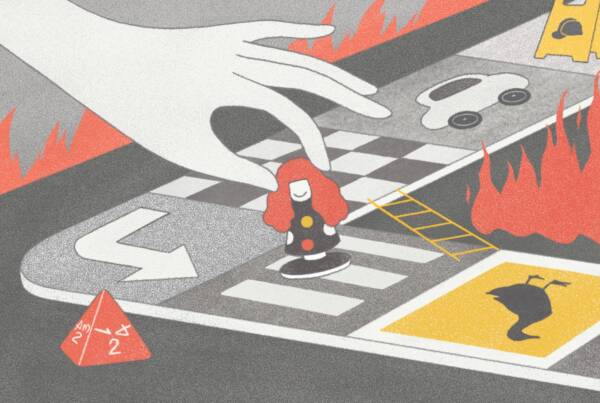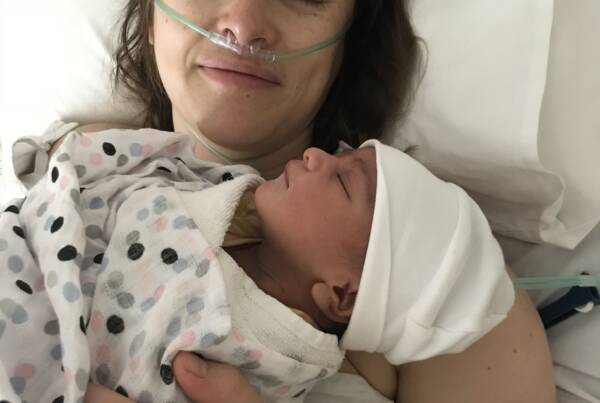Writing by Elaine Mead // Illustration by April Phillips // I don’t want to be sat around at my future family gatherings, with young daughters and nieces resisting my mothers delectable, icing rich cupcakes, because of the language and images they will no doubt continue to be bombarded with, as I currently am.
Writing by Elaine Mead // Illustration by April Phillips
Diets. How 1990s.
Somewhere between then and now the concept of ‘dieting’ became incredibly tacky. This is 2018 and we don’t diet. Instead we have ‘clean eating’, ‘whole foods’, and ‘real foods’. We have the gluten free, dairy free, sugar free, low-carb, all everything health plan. We are wellness warriors. We don’t pursue diets, we pursue lifestyles.
Jump on social media and you can find more wellness foodie bloggers than you might care to count. Jump on their websites and you’ll be able to purchase a number of recipe books and fitness and wellness (not diet) plans. All of them advocating to us how to eat, what to eat, when to eat … oh wait.
Rather than step away from the often dangerous world of dieting entirely, we’ve simply found a new language to promote and push the same restrictive ideals. Along with the word ‘diet’ the words skinny and thin have left the building and been replaced with more suitable hashtags to support the new language of nutrition wellness; #FitNotThin #Lean #NourishYourself and #FitForMe.
Jean Anthelme Brillat-Savarin, the famous 17th century politician, lawyer and philosophical gastronome extraordinaire once said ‘tell me what you eat and I will tell you what you are’. When we reflect on this, do we think he was referring to nutrients, organic produce and calories?
No.
He was talking about the culture of food. The heritage and identities that are attached to what we eat, how we eat, and more importantly, who we eat with. He was referring to the purpose of eating, the ideals of a good meal shared with good people.
I have many memories from growing up of family gatherings at my grandmothers home centered around food. Birthdays celebrated with huge, homemade, calorific and inventive cakes (my grandparents enjoyed getting creative. I distinctly recall a huge rectangle with inch thick, bright green icing, coconut flakes and marzipan men that surmounted to a football themed cake for my cousin). Many of these meals were shared around home-cooked food, but there are also memories of bags of hot, steaming, greasy chips and battered cod, mushy peas, jellied eels and pickled onions. The great British tradition of fish and chip Friday, devoured by my family of aunts and uncles and cousins, amongst tales of their own childhood misadventures.
I recall my grandfather’s penchant for sneaking sweets and cakes to us, long after parental warnings of ‘that’s enough!’. The memory here is not of the food itself, but the twinkle in my grandfather’s eye, the shake of my mother’s head as she suppressed a smile, and the idea of food as a medium for connection across ages.
In this new found plight for wellness, the culture – the value – of food is sucked dry. Down to the skinny bones of the advocates of these isolating diets. Clean eating is a diet. It includes restrictive meal plans, that may not count calories, but sure do make sure there aren’t many to be counting in the first place. We’re pitched that it is a lifestyle, but a lifestyle devoid of any heritage, cultural identity and freedom is not one I want to be a part of.
Moreover, there is so little to actually support the claims made by this modern day era of restrictive eating. Claims that include anti-ageing benefits, life longevity, and overall mind-body vitality. From the simple shiny hair and nails, to downright dangerous ‘helps to cure cancer’; the danger of the promotion of this ‘lifestyle’ is that many of the followers genuinely believe they are in the right, with exceptionally minimal education for the ‘advice’ they spout.
I recently read ‘The Woman Who Fooled the World’ by investigative journalists Beau Donelly and Nick Toscano, who uncovered the wellness con of Belle Gibson. They provide a robust review of the current state of the food wellness industry, including the individuals who promote clean eating as having more health benefits than it does (such as curing cancer). Gibson was one in a long line of con-artists since the emergence of food wellness, and this book offers excellent analysis of how the dangers have become heightened with the invention of social media.
Another excellent read for insights into the unhealthy language of this ‘lifestyle’ is Ruby Tandoh’s essay on her experiences. After deciding that her relationship with food left her feeling dull, she discovered clean eating and made the switch; with less than positive results. Tandoh makes no secret of having battled with eating disorders, and clean eating seemed like a safe and constructive alternative, eliminating everything ‘bad’ – eggs, dairy, gluten, sugar, red meat, processed food, potatoes, white rice, white bread … you see where I’m going with this.
She asks an important question:
“Wellness doesn’t cause eating disorders. But when we advocate, and even insist upon, a diet so restrictive, moralising, and inflexible, and market that diet to young women, and then dress it up as self-care: Just how responsible is that?”
The one thing we do know with any certainty is that nutrition is a complex and contested field. Nutrition is incredibly unique to each individual. ‘Cure-all’ elimination diets fail to take this, the only sure thing in nutrition, into account. Healthy eating isn’t about elimination. It’s about utilising current scientific research to educate ourselves about how food affects us (sugar, alcohol and caffeine remain the big ones to be mindful of, but the general consensus as ever is ‘everything in moderation’). It’s using medical practice to explore what we can or can’t tolerate.
The wider impact this new language of dieting has across society, and young people – women – in particular is huge. Tandoh expresses it best:
“The language used in wellness circles soars clear of dietary science and straight into another realm altogether. On popular wellness blogs, the gluten I’ve heard about is “evil,” “poison,” “contaminating,” and “toxic.” There’s even a leading Australian gluten-free site called glutenisthedevil.com. This isn’t just about nutrition, it’s about morality, and when food becomes imbued with this kind of scandalising language, the dinner table becomes a minefield.”
Healthy eating isn’t just about providing the bare minimum of nourishment to our bodies, it’s about cultivating a positive mental attitude and physical acknowledgement for the foods that are enriching for us. For me, food is sustenance and an excuse to build community. The new language of ‘clean’ eating implies a hierarchy and purity, an unsaid insinuation that those who partake in any other form of eating are the opposite – dirty. It’s a language that brings with it a sub-culture of shaming and persecuting, once more among women.
Clean eating does not make you ‘healthier’ in the more robust sense of the word. Full fat milk and white bread are not the devil. Cauliflower rice will not help you live longer.
I don’t want to be sat around at my future family gatherings, with young daughters and nieces resisting my mothers delectable, icing rich cupcakes, because of the language and images they will no doubt continue to be bombarded with, as I currently am.
Eating whatever foods you like doesn’t make you ‘naughty’ or ‘dirty’. It makes you human.







